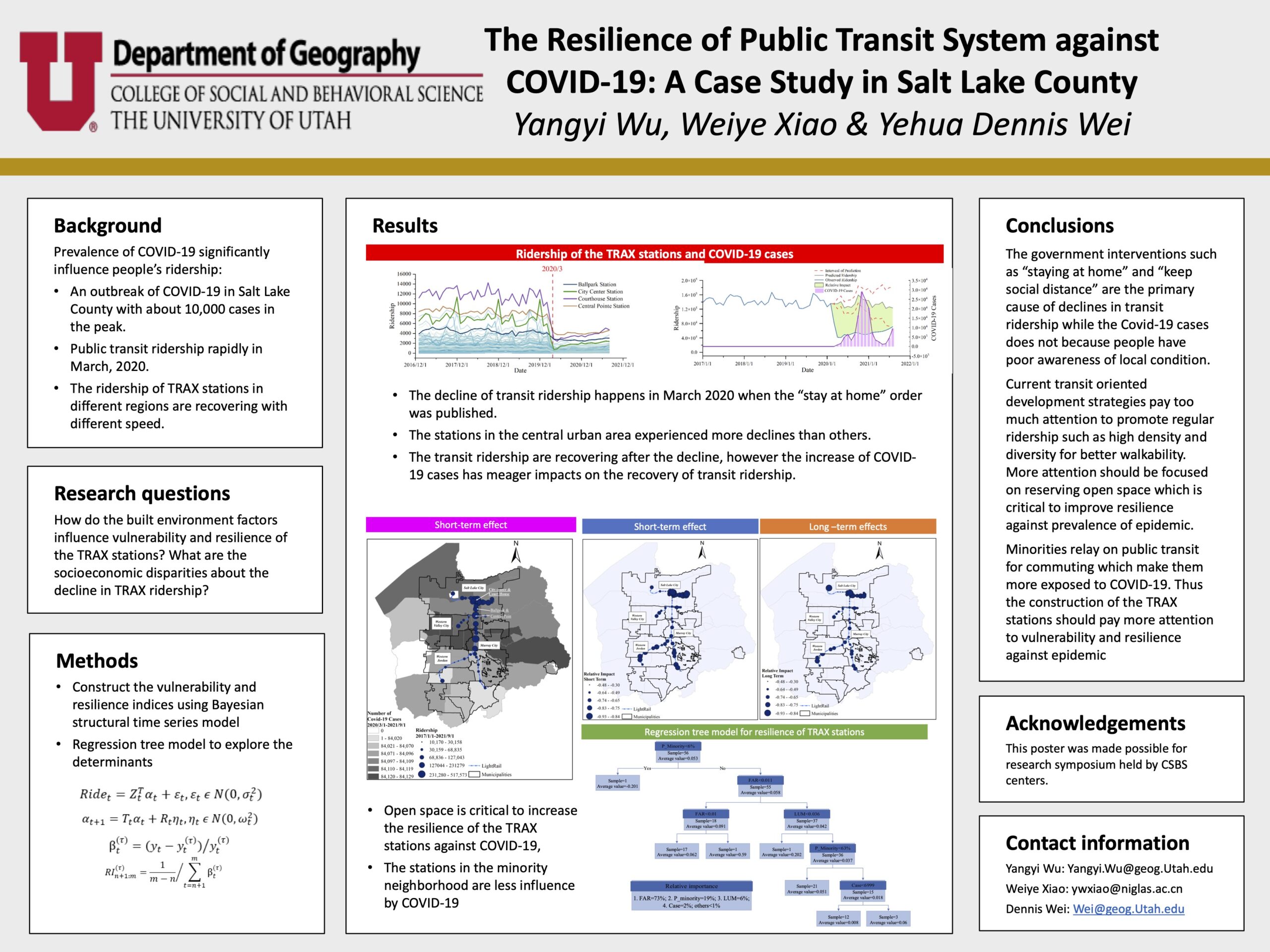The Resilience of Public Transit System against COVID-19: A Case Study in Salt Lake County
–Weiye Xiao, Yehua Dennis Wei & Yangyi Wu
[bs_collapse id=”collapse_bb86-afd7″]
[bs_citem title=”Bio” id=”citem_e610-6c22″ parent=”collapse_bb86-afd7″]
Weiye is a recent graduate of the Ph.D. program in geography. His research interest is urban geography, mainly focusing on public transportation and its relationship to urban outcomes.
[/bs_citem]
[bs_citem title=”Abstract” id=”citem_eca8-96a7″ parent=”collapse_bb86-afd7″]
This study examines the light rail ridership around the 2020 when the outbreak of COVID-19 happened in the United State and tries to identify the vulnerability and resilience of light rail ridership against prevalence of worldwide pandemic. A Bayesian structure time series model is employed to estimate the relative impact of COVID-19 on light rail ridership and the resilience. The results suggest that the policy “staying at home” contributed to the drop in light rail ridership rather than COVID-19 cases. The stations in the downtown area are vulnerable to COVID-19 pandemic, and recover slow. Further analysis using regression tree aims to find the determinants of light rail’s vulnerability and resilience against COVID-19. It is suggested that open space around light rail stations is the dominating driver of resilience and more open space contributes to higher resilience.
[/bs_citem]
[bs_citem title=”Narrative” id=”citem_780c-0f71″ parent=”collapse_bb86-afd7″]
COVID-19 has swept the whole world and its prevalence has led to an unprecedented decline in transit ridership. This study examines the light rail ridership in Salt Lake County around 2020 when the outbreak of COVID-19 happened in the United State and tries to identify the vulnerability and resilience of light rail ridership against the prevalence of worldwide pandemics. A Bayesian structure time series model is employed to estimate the vulnerability and resilience of light rail ridership against COVID-19. The results suggest that the policy “staying at home” contributed to the drop in light rail ridership rather than COVID-19 cases. The stations in the downtown area are vulnerable to the COVID-19 pandemic and recover slowly. Further analysis using a regression tree aims to find the determinants of light rail’s vulnerability and resilience. The traditional merits of urban design have made the stations more vulnerable and less resilient. Open space around light rail stations is the dominating driver of resilience and more open space contributes to higher resilience. The minority neighborhoods usually experienced more drops in transit ridership during COVID-19. The findings improve our understanding of the vulnerability and resilience of transit ridership during a pandemic and are expected to help combat pandemics in the future.
[/bs_citem]
[/bs_collapse]

